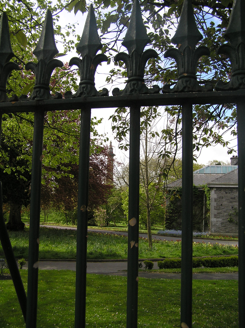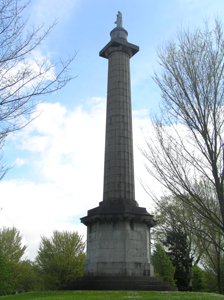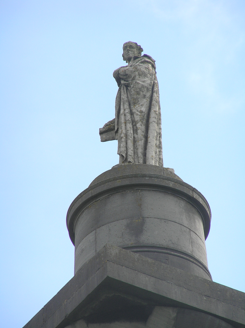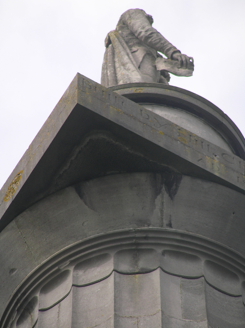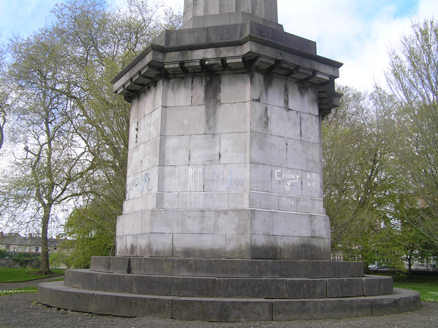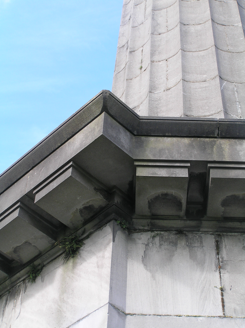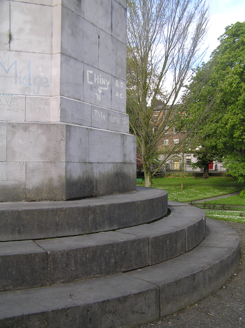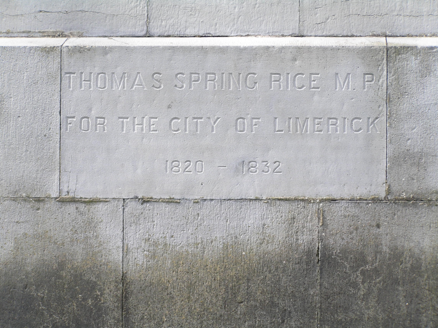Survey Data
Reg No
21517287
Rating
Regional
Categories of Special Interest
Architectural, Artistic, Historical, Social
Original Use
Monument
Date
1820 - 1840
Coordinates
157524, 156470
Date Recorded
24/07/2005
Date Updated
--/--/--
Description
Freestanding limestone Greek Doric column surmounted by Portland stone sculpture of Thomas Spring Rice, erected in 1829, on a raised mound at the centre of the People's Park, formally Pery Square. Robed sculpture facing northwest towards the Tontine Building on Pery Square, standing on a plain limestone ashlar cylindrical base above a fluted limestone ashlar Greek Doric column. The column sits on an octagonal limestone ashlar base with projecting cornice and mutules. On the base there are three limestone steps in a circular format. Plaque on octagonal base reads: 'Thomas Spring Rice M.P. for the City of Limerick 1820-1832'.
Appraisal
Standing in the middle of this quiet leafy square, the monument gives a sense of the aspiration of grandeur of the newly fashionable part of Limerick as well as serving as a memorial to the influential Thomas Spring Rice. Spring Rice (1791-1866) was still alive, in his late thirties, an MP for the city, with a government post, and a landowner in County Limerick. He was extremely popular in the city. He was later 1st Baron Monteagle of Brandon, County Kerry. His initial election as MP in 1820 had involved the triumph of the Independent party, which represented the merchant interest and it broke a well established, conservative oligarchy that had dominated Limerick politics for many years. His supporters were involved in the building of Newtown Pery and it was fitting that his monument should have a prominent place in the new town. The statue was erected in 1829 by the Barrington family, who invested heavily in this part of the city and who anticipated further expansion, which was never realised. The renowned sculptor Thomas Kirk carved the statue. The statue was placed on top of the monument designed by Henry Aaron Baker in 1826.
